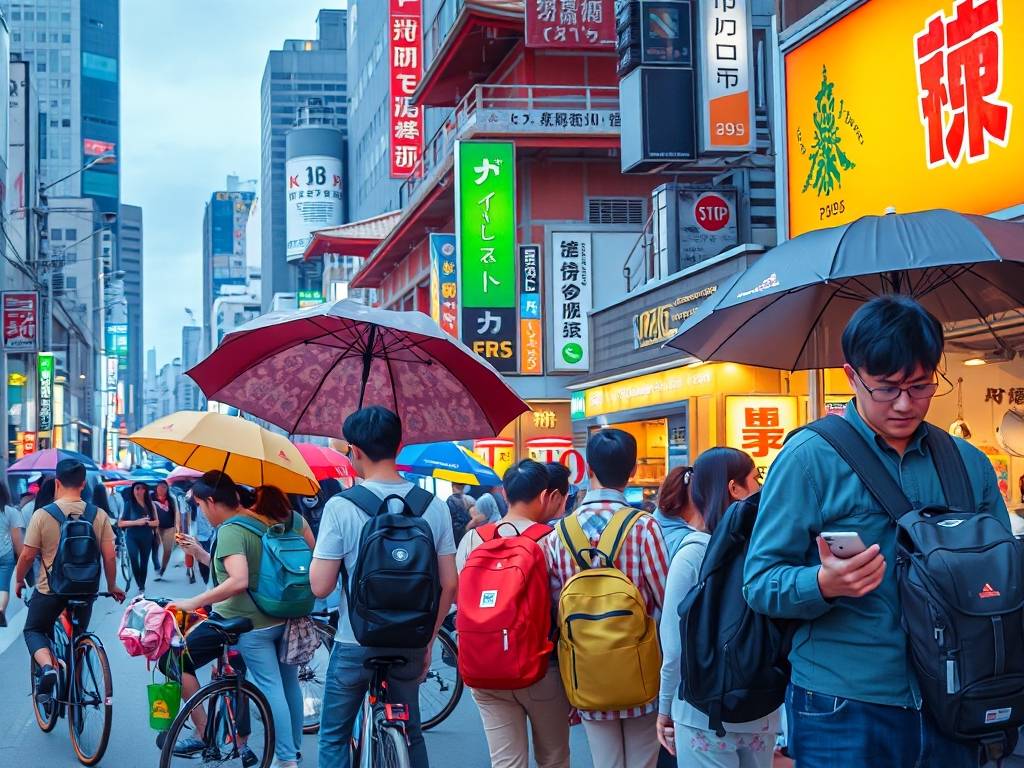Japan Travel
Tokyo’s Transportation Gear Reviews: Read About Commuter Tools
Tokyo Transit Toolkit: An In-Depth Guide to Smarter Commuting
Navigating Tokyo's vast and vibrant metropolis is an experience unlike any other. For its millions of residents and visitors, the daily commute is not just a journey from A to B; it's a ritual, a test of endurance, and a unique slice of urban life. Whether you're a seasoned salaryman or a first-time tourist, having the right gear can transform this experience from a crowded chore into a smooth, efficient, and even enjoyable part of your day. This comprehensive review of essential commuter tools is designed to be your ultimate guide, helping you curate a personalized Tokyo transit toolkit that addresses comfort, convenience, and connectivity.
Let's start with the foundation of any Tokyo commute: the bag. The standard backpack often falls short in the packed confines of a Yamanote Line train during rush hour. What you need is a slim commuter backpack for crowded trains. These bags are engineered with a narrow profile to minimize the space you occupy, reducing the chances of accidentally bumping into fellow passengers. Look for models with secure, anti-theft zippers and materials that are both lightweight and durable. Many top-tier options, like those from Japanese brands such as Porter Yoshida or international brands with a focus on urban mobility, feature designated pockets for your commuter pass holder, water-resistant fabric for rainy days, and even a separate compartment for a tablet or small laptop. The goal is a bag that sits snugly against your back, keeping your belongings secure and your silhouette streamlined.

Speaking of the commuter pass holder, this might seem like a small item, but it is arguably the most crucial tool in your arsenal. In the relentless flow of human traffic, fumbling for your Suica or Pasmo card at the ticket gate is a cardinal sin. A dedicated pass holder, often worn around the neck or attached to a lanyard tucked into a pocket, allows for a seamless, one-handed tap-in and tap-out. The best hands-free pass holder cases are more than just plastic sleeves; they are multi-functional wallets. They typically feature a clear window for your pass, a few slots for essential cards like your ID and credit card, and sometimes even a small compartment for coins. This consolidation means you can leave your bulky wallet in your bag, accessing everything you need for the transit portion of your journey with effortless speed. For the ultimate in efficiency, consider a durable lanyard with card slot that you can simply swing towards the sensor without breaking stride.
Now, let's talk about creating your personal oasis of calm. Tokyo's trains are famously quiet, and a big part of being a respectful commuter is managing your noise output. This is where a pair of high-quality noise-cancelling headphones for peaceful travel becomes non-negotiable. The constant hum of the train, the rustle of bags, and the distant announcements can be draining. Brands like Sony and Bose offer models that effectively create a bubble of silence, allowing you to enjoy music, podcasts, or audiobooks without cranking up the volume. For an even more authentic experience, many Tokyoites opt for traditional wired earphones, which eliminate Bluetooth connectivity issues and battery anxiety. Pair your headphones with a curated playlist or an engaging podcast, and you've instantly upgraded your commute from noisy transit to productive or relaxing "you time."
Comfort extends beyond your ears. The best portable seat cushion for train use is a secret weapon for those times when you're lucky enough to snag a seat, especially on longer journeys. Train seats aren't always the most comfortable, and during off-peak hours, you might find yourself wanting to relax more fully. A compact, foldable cushion made of memory foam or a supportive inflatable material can provide much-needed lumbar support or simply make a hard plastic seat more bearable. They are lightweight and can be easily strapped to the outside of your slim commuter backpack. Similarly, don't underestimate the power of a compact umbrella with quick-dry sleeve. Tokyo's weather can be unpredictable, and a sudden downpour can spell disaster. A small, sturdy, and wind-resistant umbrella is essential. The key feature to look for is the quick-dry sleeve—a separate pouch to store your wet umbrella without soaking everything else in your bag. This simple tool prevents a minor inconvenience from ruining your day.
Staying powered is another critical aspect of modern commuting. Your smartphone is your map, your entertainment, and your connection to the world. A high-capacity power bank for all-day navigation is an absolute must. There's nothing more stressful than seeing your battery dip into the red zone while you're still navigating the labyrinthine stations of Shinjuku or Tokyo. Invest in a reliable, high-mAh power bank that can fully charge your device at least once or twice. Look for models with multiple ports and fast-charging capabilities. This ensures that whether you're using demanding navigation apps, scrolling through social media, or answering work emails, you'll never be left disconnected. This is one of the most vital commuting essentials for Tokyo professionals and casual explorers alike.
Beyond these core items, let's consider a few other essential commuter tools that can make a significant difference. A pocket-sized hand fan is a lifesaver during Tokyo's hot and humid summers, especially while waiting on a non-air-conditioned platform. A small bottle of hand sanitizer is a hygienic practice that's appreciated by all. For the avid reader or productive professional, an e-reader or a lightweight tablet is far superior to carrying heavy books or a full-sized laptop.
Finally, the most important tool isn't something you can buy: it's knowledge. Before you set out, use apps like Google Maps, Japan Travel by Navitime, or the official JR East app to plan your route. These apps provide real-time information on train schedules, the most efficient lines, and even which car is best for making smooth transfers. Understanding the basic etiquette—silencing your phone, queuing in orderly lines, and avoiding eating on most trains—is just as crucial as any piece of gear.
In conclusion, mastering the Tokyo commute is about smart preparation. By carefully selecting your gear—from a slim commuter backpack and a hands-free pass holder to noise-cancelling headphones and a reliable power bank—you equip yourself not just to survive, but to thrive. Your daily journey can become a time for relaxation, productivity, or simple observation of one of the world's most dynamic cities. So, assemble your toolkit, tap your pass with confidence, and step into the rhythm of Tokyo. Your better commute starts now.

相关文章
- Tokyo’s Night Market Souvenir Tip Reviews: Read About Gift Hacks
- Japan’s Spring Photography Gear Reviews: Read About Camera Tools
- Japan’s Coastal Bike Gear Reviews: Read About Cyclist Equipment
- Kyoto’s Traditional Shopping Gear Reviews: Read About Shopper Tools
- Japan’s Budget Accommodation Gear Reviews: Read About Travel Equipment
- Japan’s Mountain Star Gazing Gear Reviews: Read About Telescope Tools
- Japan’s Traditional Tea Ceremony Gear Reviews: Read About Tea Tools
- Japan’s Summer Surf Gear Reviews: Read About Beach Equipment
- Kyoto’s Fall Foliage Gear Reviews: Read About Hiking Equipment
- Japan’s Budget Dining Gear Reviews: Read About Food Tools
发表评论
评论列表
- 这篇文章还没有收到评论,赶紧来抢沙发吧~


